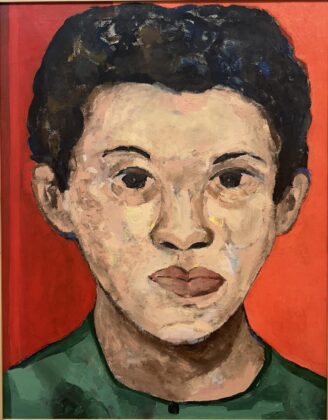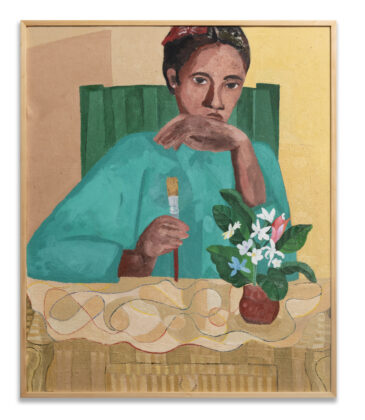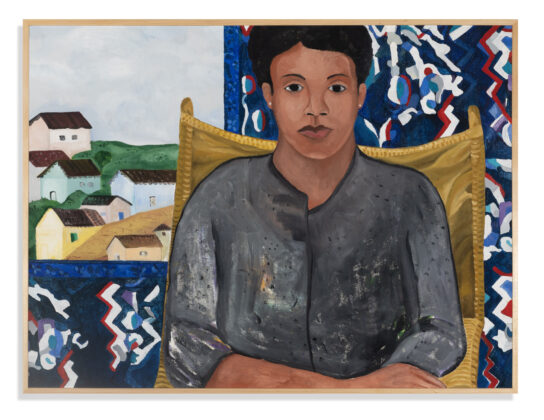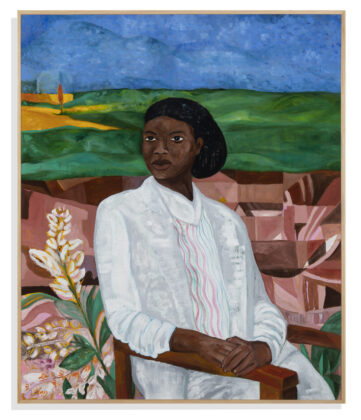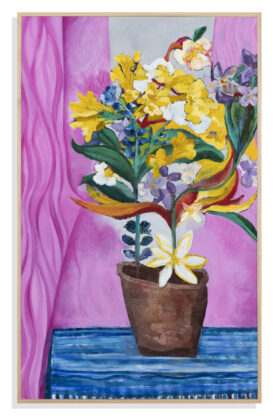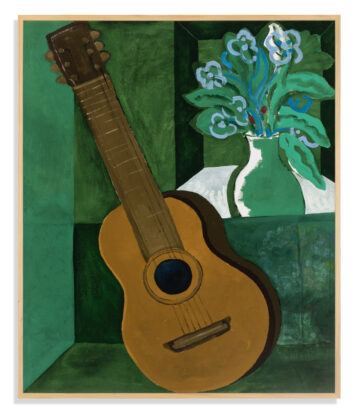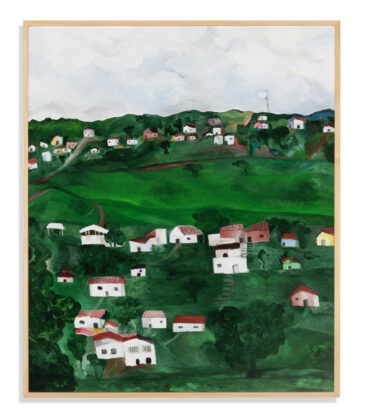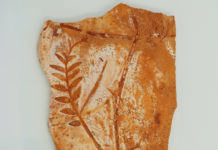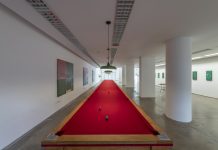OPortraits with expressive eyes are a hallmark of Rafael Pereira's production, who until the 20th (Saturday) presents his first solo show at Galeria Estação, in São Paulo. Curated by Tiago Sant’Ana, Polish images brings together 20 oils on canvas by the painter from São Paulo, whose works interact with modernist aesthetics. “If you look at the backgrounds of his works, you see Tarsila, Segall, Guignard, Portinari, Di. And I know that this is spontaneous in his practice. I wouldn’t like it if it weren’t”, says the gallerist Vilma Eidin an interview with arte!brasileiros. “I see that he does a lot of research in art books. But the result is not a reproduction of his research, it refers to the gallery program, in which we present non-scholars”.
Rafael Pereira's winding path is an important key to understanding his production, which also includes landscapes and still lifes. Born in 1986, in the capital of São Paulo, he worked as a teenager, in Teófilo Otoni (MG), cutting precious jewelry, a craft that served as inspiration for the title of his exhibition. As a child, he says, even though he had no contact with works of art in his home, he already showed an interest in painting and drawings. “My mother and my family always said that I liked having contact with artistic materials,” he says.
The first push came in 2001, when he received paints and paper from collector Torquato Sabóia Pessoa and his wife, ceramicist Claudete Guitar. His mother, Maria do Carmo Alves Jardim, worked as a domestic worker for the couple. And, interestingly, Pessoa had been Vilma's partner in the dealer's first gallery, alongside Paulo Vasconcellos. “Torquato always talked about introducing Rafael to me, but time passed, and that never happened”, remembers Vilma. It wouldn't be the only coincidence.
In 2008, Pereira stopped cutting and began to dedicate himself to his production as an artist, which he sold for 13 years on Rua Augusta, Avenida Paulista and Praça da República, among other streets in the city. On Rua Teodoro Sampaio, near Praça Benedito Calixto, he had sold a work about ten years ago to collector Edmar Pinto Costa. It was through him and the artist Germana Monte-Mór that Vilma Eid was finally introduced to the artist, around two years ago.
In 2013, Pereira began a series of trips around Brazil, always selling his works on the streets. He was in Novo Airão (AM), in Ouro Preto (MG), in Rio de Janeiro (RJ) and in Pontal do Paraná (PR), until he returned to establish himself in São Paulo, in 2018, in Caraguatatuba, on the north coast of state, where he currently lives. With confinement during the pandemic, in 2020, the first still lifes and landscapes would have appeared. “It was from that moment that I started to recover my affective memories and released my imagination into painting”, says Pereira.
The exhibition brings back one of the painter's fond memories: a green landscape, a hill dotted with houses and other buildings, which he had always seen from the window of his childhood home, and which he had painted based on a photograph kept by his mother. . Portraits of him, however, are usually painted from memory. And more recently, the painter sought to portray more black bodies, aware of the invisibility to which they are subject, and also the result of a process of self-recognition.
In his practice, Pereira often mixes and adds new techniques. He started with acrylic paint on paper, incorporated oil pastels and ink, until arriving at the oils on canvas present in the individual exhibition. “My painting is always changing, and I'm not afraid to use different materials,” he says.
About two years ago, Pereira was finally introduced to Vilma Eid. “We agreed that we would hold the exhibition, but before that we would give him some time to mature, both in his relationship with the gallery and with this art system that he never worked with. Because sometimes something scares and blocks the artist”, says the gallerist. “I was afraid that the interest on the part of the gallery would provoke a rush for production. But that didn't happen. I never saw him bring a large or small number of works. It was always the same number of screens, which shows that he has a constant work routine.”
Maturing also involved an online course – the pandemic still imposes restrictions – with the painter Paulo Pasta. According to Pereira, in classes with Pasta came tips on light and composition that were incorporated into his work. “It was guidance he gave me that I carry to this day,” says the painter.
Over these two years, Galeria Estação did not keep Pereira's works. “We showed it, and there wasn't a single person who saw it and didn't like it. Everyone likes it a lot. I even joke that he is a salesman. More than 20 works were sold”, says the gallery owner.
The gallerist also highlights that Pereira’s works bring a “unique poetics”, which “resides in his soul”. “In his works this is something more noticeable in the portraits, especially in the faces. And in the way he contextualizes his characters, whether they're sitting, looking out the window, fishing. He always has a narrative”, says Vilma. “This is the work I like to do: meeting these young people, who are talented, but haven't had the opportunity yet, and giving them a chance. And so it was with Rafael.”



